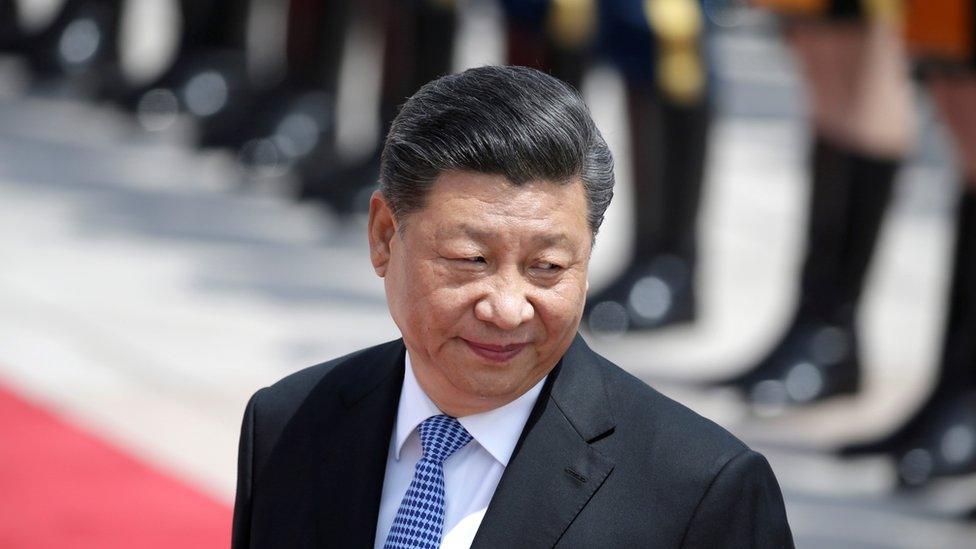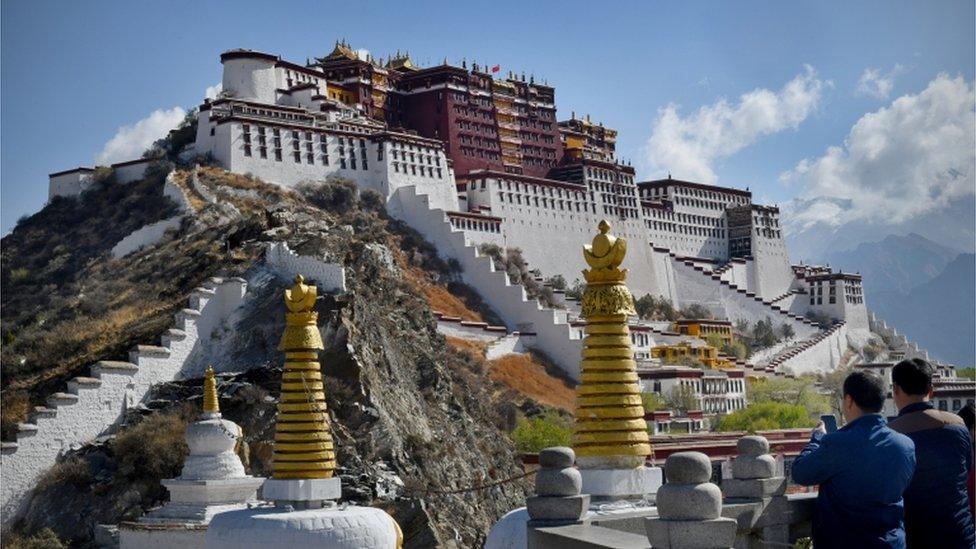First Chinese presidential visit to Tibet in 30 years
- Published

Xi Jinping pictured in Beijing in 2019. The Chinese president was seen in Tibet this week on a rare visit
President Xi Jinping has visited the politically troubled region of Tibet in the first official visit by a Chinese leader in 30 years.
The president was in Tibet from Wednesday to Friday, but state media reported the visit after it ended.
China is accused of suppressing cultural and religious freedom in the remote and mainly Buddhist region.
The government denies the accusations and says Tibet has developed considerably under its rule.
In footage released by state broadcaster CCTV, Mr Xi was seen leaving his plane and greeting a crowd wearing ethnic costumes and waving the Chinese flag.
He arrived in the south-east of the country before travelling to the capital Lhasa on the high-altitude railway.
While in Lhasa, Mr Xi visited the Potala Palace, the traditional home of exiled Tibetan spiritual leader, the Dalai Lama.
People in the city had "reported unusual activities and monitoring of their movement" ahead of his visit, advocacy group International Campaign for Tibet said on Thursday.
Mr Xi last visited the region 10 years ago as vice-president. The last sitting Chinese leader to officially visit Tibet was Jiang Zemin in 1990.
State media said Mr Xi took time to learn about the work being done on ethnic and religious affairs and the work done to protect Tibetan culture.
Many exiled Tibetans accuse Beijing of religious repression and eroding their culture. As a result, there have been a number of protests including self-immolations, making the topic of Tibet very sensitive to Beijing.
Tibet has had a tumultuous history, during which it has spent some periods functioning as an independent entity and others ruled by powerful Chinese and Mongolian dynasties.
China sent in thousands of troops to enforce its claim on the region in 1950. Some areas became the Tibetan Autonomous Region and others were incorporated into neighbouring Chinese provinces.
Campaign groups accuse China of political and religious repression and say it continues to violate human rights.

You may also be interested in
WATCH: Lobsang Sangay: Tibetans being detained in camps by Chinese
Related topics
- Published23 September 2020

- Published17 May 2020
